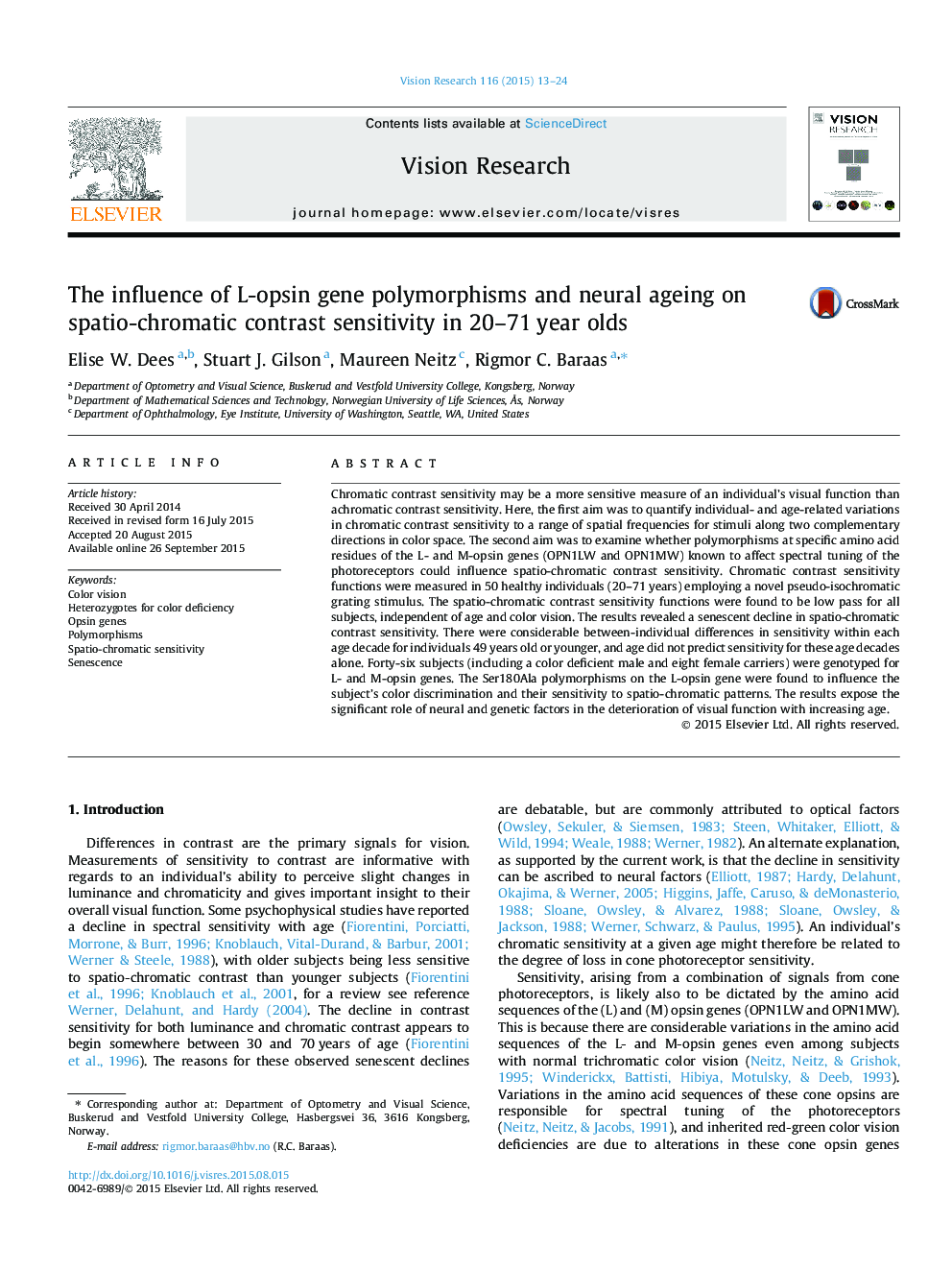| Article ID | Journal | Published Year | Pages | File Type |
|---|---|---|---|---|
| 6203171 | Vision Research | 2015 | 12 Pages |
â¢Age and L-opsin gene polymorphism effects on chromatic function quantified.â¢Role of neural changes shown in senescent decline in chromatic contrast sensitivity.â¢Chromatic contrast sensitivity predicted by polymorphisms on L-opsin genes.
Chromatic contrast sensitivity may be a more sensitive measure of an individual's visual function than achromatic contrast sensitivity. Here, the first aim was to quantify individual- and age-related variations in chromatic contrast sensitivity to a range of spatial frequencies for stimuli along two complementary directions in color space. The second aim was to examine whether polymorphisms at specific amino acid residues of the L- and M-opsin genes (OPN1LW and OPN1MW) known to affect spectral tuning of the photoreceptors could influence spatio-chromatic contrast sensitivity. Chromatic contrast sensitivity functions were measured in 50 healthy individuals (20-71Â years) employing a novel pseudo-isochromatic grating stimulus. The spatio-chromatic contrast sensitivity functions were found to be low pass for all subjects, independent of age and color vision. The results revealed a senescent decline in spatio-chromatic contrast sensitivity. There were considerable between-individual differences in sensitivity within each age decade for individuals 49Â years old or younger, and age did not predict sensitivity for these age decades alone. Forty-six subjects (including a color deficient male and eight female carriers) were genotyped for L- and M-opsin genes. The Ser180Ala polymorphisms on the L-opsin gene were found to influence the subject's color discrimination and their sensitivity to spatio-chromatic patterns. The results expose the significant role of neural and genetic factors in the deterioration of visual function with increasing age.
